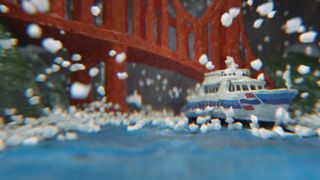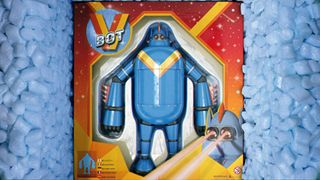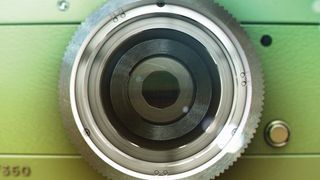Mixed-media commercial celebrates inner beauty
VFX supervisor Mike Skrgatic explains how Honda’s latest spot takes you inside various objects, revealing the unexpected beauty within.
Nexus directors, Smith & Foulkes, have established a brilliant relationship with the creative team at W+K London. Together they have combined to create some of the most loved and celebrated ads of the last decade.
This admiration is best epitomised in their collaborations for Honda. Ads such as Grrr, Unpredictable Life and, more recently, Hands have all blazed the trail for innovation in car advertising. 3D forms the backbone of all of these ads, whether it be the charming character animation of Grrr or the photo-real 3D miniatures depicted in Hands.
Their latest offering pays tribute to the idea that beauty is about much more than what appears on the surface. It's a wonderful but crazy idea that combines stop-frame animation, live action and, once again, lots of 3D. We got on board to help with the planning and the production of the VFX.
Although it was apparent from early on that the role of 3D in the project would not need to break new technical ground we were faced with a conceptual problem that is completely at odds with most 3D image making. This was the concept of generating objects that were more than surface deep; objects full of working parts and detail that made the application of CG for this project more akin to an exercise in CAD or industrial design!
The other challenge for the CG in the film followed on from this, which was the need to hold up to the closest scrutiny and to integrate seamlessly with the beautiful macro photography.
01. Pre-vis and planning

The foremost challenge was to devise the journey. We had to understand the general flow but also required a bespoke solution of travel through each specific object. We set about making a full 3D pre-vis to help visualise the concept as a series of parts that made a complete film.
This exercise formed the blueprint for the entire design of the commercial, helping to determine what would be built in 3D and what would be shot. It also made clear the amount of slices or parts in each pass through.
This had to be precise so that whatever was made by the model makers would fit into the allocated duration. It's inconceivable to consider planning something of this magnitude without 3D. The sense of authorship is rewarding and the affinity that's absorbed at inception results in a strong bond between artists and idea.
02. Research

The initial stages of production were spent researching each of the objects. In total we had to create the inner core of a golf ball, a camera inside and out, a toy robot, the inside of an accordion, an amp and its inner workings, a suitcase and a snow globe. We had to accurately represent the innards but in the case of something like the camera or accordion it also had to be true to its function.
We sacrificed many objects in the name of research and cut them up to look inside. It made for a very chaotic but hands-on environment with multiple deconstructed cameras and many accordion parts strewn across the 3D studio. In filmmaking you rarely consider what's out of frame or that which isn't seen. In the case of Inner Beauty, where everything is on show, meticulous research was an essential part of the 3D build.
03. Detail and integration

Macro photography captures every inch of detail. It was by this reckoning that we set our standards; every frame had to hold up as a still in its own right. Much of this detail is lost in playback but the success of the idea lives and dies by this comprehensive approach.
It had to be exacting, from the blobby, miniaturised modelling of the boat in the globe to the wear and tear of the working parts in the accordion. We analysed the unique language of stop-frame animation to help with integration.
The subtle change in position after the replacement of an object on each frame was mimicked and human imperfections added. These more subtle details mixed with light leak, lens aberration and distortion, some moments of exposure compensation and the absence of motion blur, all combined to embellish the overall honesty of the 3D elements in context
Words: Mike Skrgatic
Mike Skrgatic founded Time Based Arts with friend and fellow Flame artist James Allen in 2008. He is a VFX supervisor. This article originally appeared in 3D World issue 182.

Thank you for reading 5 articles this month* Join now for unlimited access
Enjoy your first month for just £1 / $1 / €1
*Read 5 free articles per month without a subscription

Join now for unlimited access
Try first month for just £1 / $1 / €1
Get the Creative Bloq Newsletter
Daily design news, reviews, how-tos and more, as picked by the editors.
The Creative Bloq team is made up of a group of design fans, and has changed and evolved since Creative Bloq began back in 2012. The current website team consists of eight full-time members of staff: Editor Georgia Coggan, Deputy Editor Rosie Hilder, Ecommerce Editor Beren Neale, Senior News Editor Daniel Piper, Editor, Digital Art and 3D Ian Dean, Tech Reviews Editor Erlingur Einarsson and Ecommerce Writer Beth Nicholls and Staff Writer Natalie Fear, as well as a roster of freelancers from around the world. The 3D World and ImagineFX magazine teams also pitch in, ensuring that content from 3D World and ImagineFX is represented on Creative Bloq.
